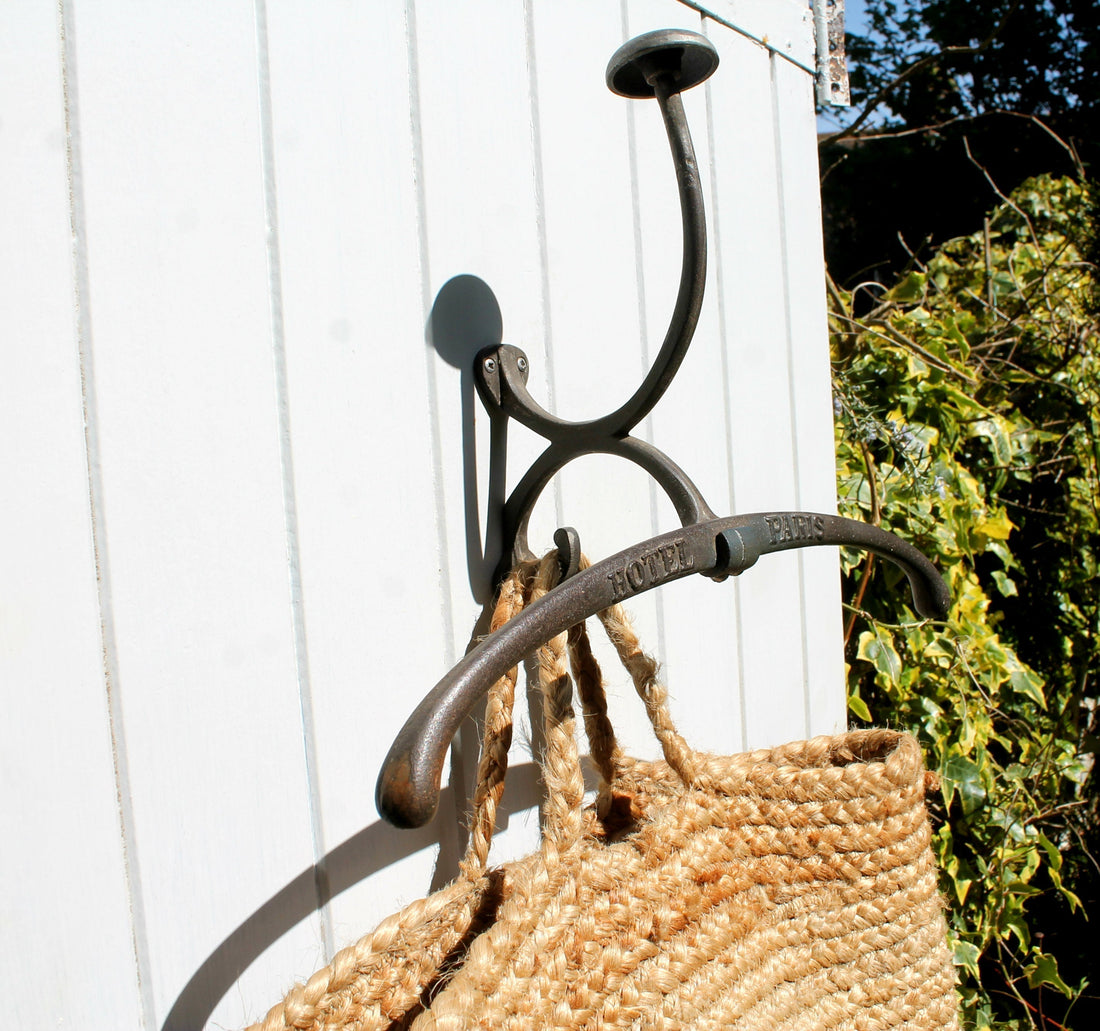
A Simple Guide To Caring For Your Cast Iron Hooks & Fixtures
Cast iron novelty hooks are not only functional pieces that add character to your home but also durable fixtures that can last for generations when properly maintained. These decorative hooks, often shaped as animals, plants, or vintage designs, bring a rustic charm and authenticity to any space. However, cast iron is susceptible to rust and deterioration if not cared for correctly. Our cast iron fixtures are coated with protective wax. To keep them in tip-top shape, they require minimal but regular maintenance. Here are a few simple steps to keeping your cast iron fixtures beautiful.



Keep Them Clean, Keep Them Dry
For day-to-day maintenance, follow these steps:
DUST: Begin by gently dusting your cast iron hooks with a soft, dry cloth. For hooks in high-traffic areas or those that see frequent use, consider making this a weekly habit to prevent buildup.
SCRUB: For a more thorough cleaning when dust removal isn't sufficient, prepare a solution of warm water with a small amount of mild soap. Using a soft cloth or a soft-bristled brush, gently clean the surface of the hook, paying special attention to ornate details where dust and grime might collect.
DRY: The most critical step after wet cleaning is thorough drying. Immediately after washing, use a clean, dry cloth to remove all moisture from the hook's surface. Any residual water left on cast iron can quickly lead to rust formation. For hooks with intricate designs, consider using a hairdryer on a low, cool setting to ensure all moisture is removed from hard-to-reach areas.
PROTECT: After drying, apply a thin layer of protective oil or maintenance wax to the entire surface of the hook. This creates a barrier against moisture and helps prevent rust formation. Suitable options include food-grade mineral oil, beeswax, or specialized cast iron maintenance wax. Apply the oil or wax using a soft cloth, ensuring even coverage across the entire surface, including any decorative elements or crevices.

Dealing With Rusty Cast Iron Hooks
Despite your best efforts at regular maintenance, cast iron hooks may occasionally develop rust spots, especially in humid environments or if they're installed in bathrooms or near exterior doors. Addressing rust promptly is essential to prevent it from spreading and causing more significant damage.
For minor surface rust that has just begun to form, start with the least abrasive method. Create a paste using equal parts water and baking soda, and apply it to the rusted areas. Let the paste sit for a few minutes to loosen the rust, then gently scrub with a soft brush or fine-grade steel wool (0000 grade). Rinse thoroughly with warm water and dry immediately and completely with a clean cloth.
For more stubborn rust formations, you may need to use a slightly more aggressive approach. Create a solution of equal parts white vinegar and water. You can either apply this solution directly to the rusted areas with a cloth or, for more extensive rust, remove the hook from the wall and soak it in the solution for about an hour. The acid in the vinegar helps dissolve the rust. After soaking, scrub the hook with a stiff brush or fine steel wool, rinse thoroughly with warm water, and dry completely.

With these practices in place, your cast iron novelty will continue to be both practical accessories and distinctive decorative elements in your home.

